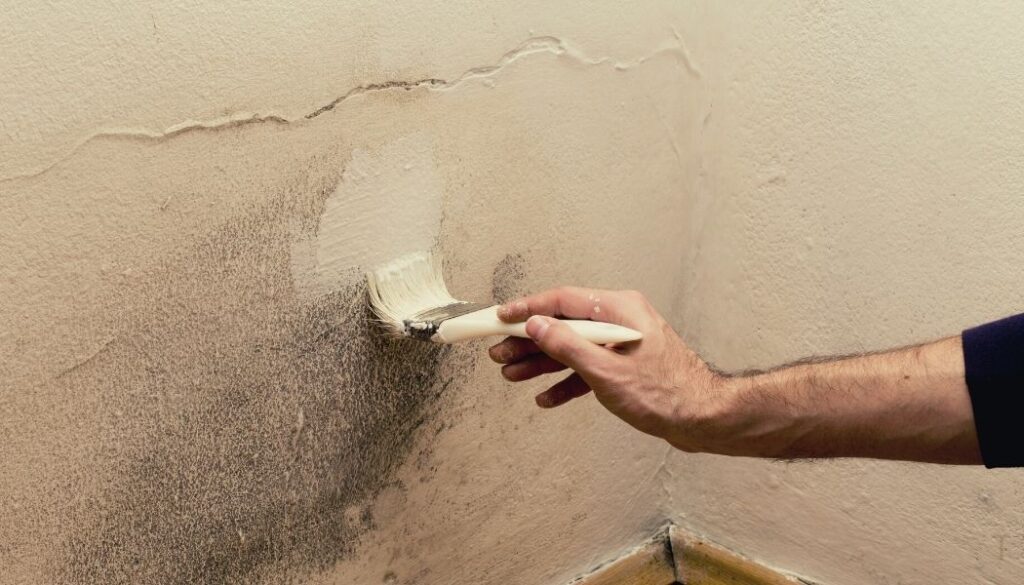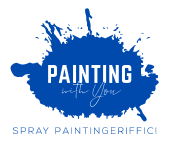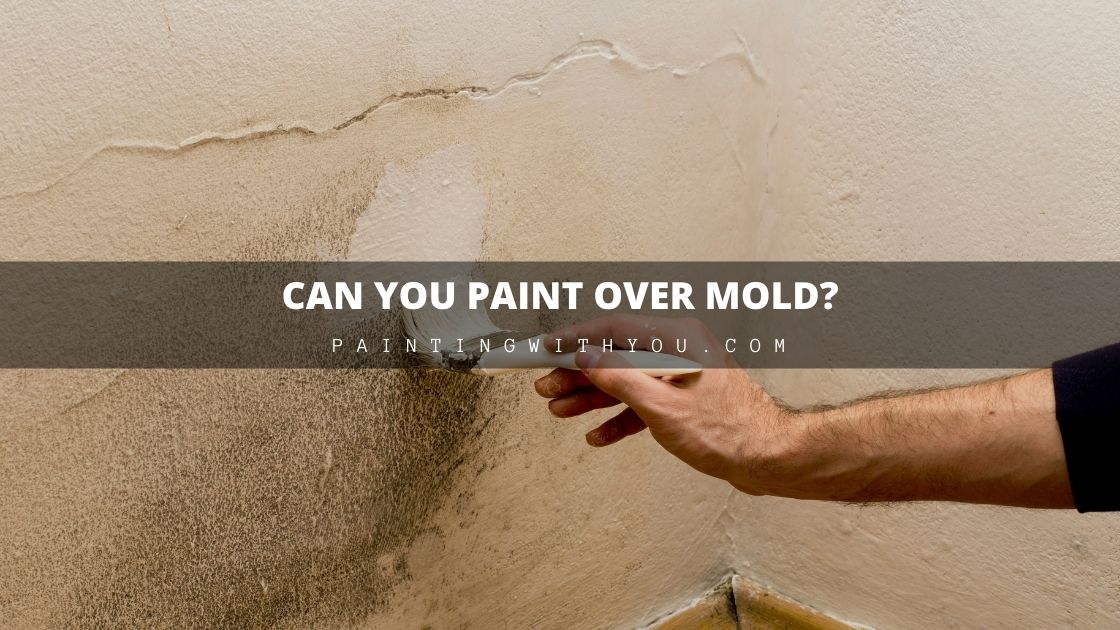When you need a fresh coat of paint, it’s always good to assess the situation of your wall for any cracks in them. However, one issue that can cause a pause in your paint project is mold.
According to the CDC, Mold is a hazard that can cause many health complications if you leave it untreated. Painting over it won’t get rid of the mold, and it will eventually reemerge again. You need to remove mold first before painting over the area.

Can you paint over mold before removing it?
You can technically paint over mold, but you shouldn’t do it until you have killed and removed it. Mold is a living organism that grows in warm and moist environments. It can also cause serious health issues for you and those living with you.
Simply painting over it won’t remove the mold, and it will eventually just show through the paint again. Also, its spores can cause it to spread and might result in a need to remove the wall or ceiling altogether. So it’s honestly better to take care of the source of the problem and remove it.
Only after you have taken steps to remove it correctly can you paint over mold. With some mold-resistant paint and primer so that you don’t have any repeat incidences.
What happens if I paint over mold without removing it?
If you try to paint over mold without removing it, the paint will begin to peel and crack. Also, the mold could spread during that time which can worsen the damage to your wall.
Problems painting over mold can cause:
- Extensive home damage – It can weaken the integrity of the wall or ceiling as the mold spreads, which can cause physical problems if caves.
- Higher cost to fix – besides the price for a professional mold cleaner, you might need to replace a whole section if neglected.
- Health issues and complications – Mold can cause severe allergic reactions and serious respiratory problems.
Meaning if left alone, you might need to do a whole wall removal in that time the mold could also be causing you health issues. So never try to paint over mold for both your wellbeing and the integrity of your home.
What can you use to remove mold?
You have to take steps before you remove mold, whether it’s on your walls or ceiling. You should first assess where the cause of the mold is occurring. Where is the moisture that is causing the mold to grow in your wall or ceiling?
Depending on the source, you might need a professional to fix a leak or purchase a dehumidifier if it’s just been humid outside. Now that you have taken care of the cause, it is time to get rid of the mold itself. While it might be tempting to grab bleach and scrub it clean, there are more effective methods.
If it’s only a tiny area, then vinegar can be the solution to your mold problem. Unlike bleach, it can seep into the source of the mold rather than the surface later.
Bleach is primarily suitable for surface-level areas, and the fumes can irritate your lungs, especially those with respiratory conditions like asthma, so vinegar is a great alternative. Specifically, white vinegar with a 5% acidity would work best.
NOTE: If the mold is more prominent than ten square feet or three by three square feet. It is recommended you get a professional rather than fixing it yourself.
Is vinegar effective for all mold?
There are different kinds of mold, so there is always a chance it might not effectively remove it. In that case, there are other alternatives you can use besides bleach. Many of these can be used in place of vinegar and are very effective against mold.
Substitutes to Vinegar:
- Hydrogen Peroxide – can use the same steps as vinegar
- Tea tree oil – Mix a teaspoon of oil into water, then spray
- A Cleaner specific to killing mold like Mold Armor.
- Baking soda – turn into a paste and layer on the mold.
How do you use Vinegar to Kill mold?
Vinegar is a handy tool at home that can help you kill most mold at the source. However, even tho it is an organic material, there are still safety precautions you need to take when using it.
Vinegar can irritate the skin and cause other issues with prolonged exposure, especially when dealing with mold. Hydrogen Peroxide and Tea-tree oil use a similar method to vinegar. The only difference is Tea-tree oil is slightly diluted.
So things you will need:
- non-porous gloves
- face mask
- protective eyewear
- Spray bottle
- Cleaning rag
- A cleaning brush
- and, of course, white vinegar with at least 5 percent acetic acid.
Steps to remove mold with vinegar
- First, make sure the room is adequately ventilated by opening windows, keeping doors open, or having a fan available.
- Put on your protective equipment as you don’t want to get vinegar in your eye or skin.
- Pour the vinegar into the spray bottle, where you will spray directly onto the mold to make sure it’s saturated.
- Let it sit there for an hour to penetrate the wall deeply before moving to the next step.
- Now use a brush to scrub the mold and be careful not to clean too hard that you cause damage to the wall itself.
- Then use a cleaning rag to dry the area of the wall of the vinegar.
- Ensure that you dispose of the rag and brush as it can contain spores from the mold that you won’t want to reintroduce anywhere.
NOTE: Do not mix vinegar with bleach or any other cleaning material as it can create a toxic gas that is dangerous to inhale and lingers.
How do you paint over mold once removed?
Once you know for sure you have removed the mold effectively, either by the DIY steps provided or with a professional, it is time to paint. Like every good paint job, you will want to use a suitable primer for the job. Since you just had mold, you likely will want to use a moisture-resistant primer, especially if in the bathroom or near a water heater.
Killz kitchen and bath is a practical primer that can resist mold growth and stain blocker. This primer is the first thing you would need to use before you paint with anything else. Make sure to do two coats of the primer before moving on to the paint and get the whole area.
This primer will not only allow some comfort of mind, but it will also allow the next layer to adhere even better. Make sure to give it two hours to dry before you move to give a second coat. As you will want to make sure it’s dry when putting on your second layer.
Now you will want paint that is also resistant to mold and water damage. Zinsser mold and mildew-proof paint is an excellent products for this. This layer of paint will require two coats, and it will need a full day to dry.
NOTE: If this is in the bathroom, wait twenty-four hours before you shower, and it will take seven days to cure.
While some brands claim to kill mold when painted on, these usually only inhibit its growth and work better as preventive measures. They don’t kill the mold at the source, so the mold can still emerge with time. It’s always better to clean the mold thoroughly to prevent future outbreaks.
Yes, if you want a different color paint, you can paint over it. First, you should check if it was water-based or oil-based. Then take the steps needed to paint over it like if it was regular paint.

